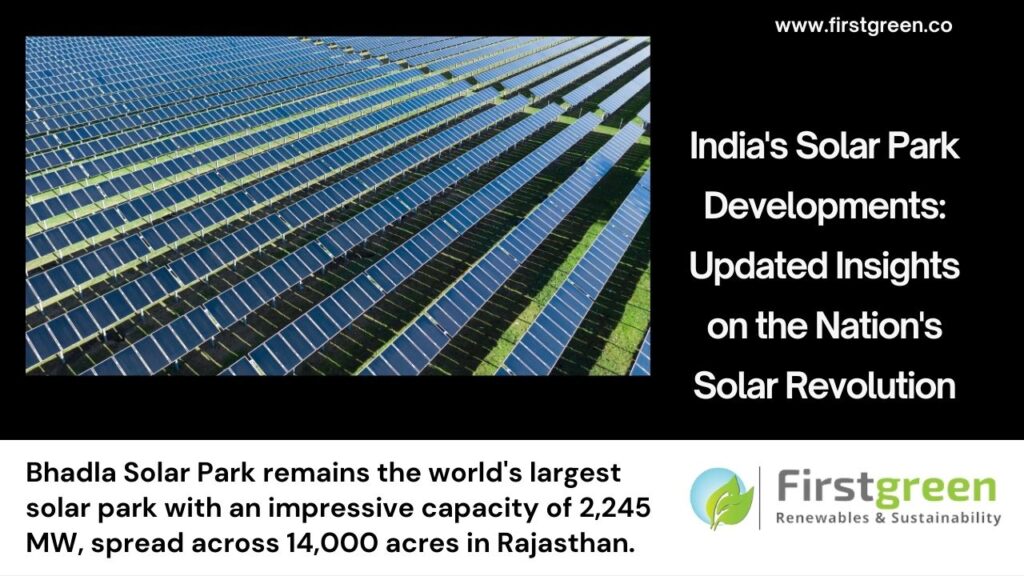
India continues to lead the global solar energy revolution, rapidly expanding its solar power capacity and commissioning some of the largest solar parks in the world. As of 2024, India’s cumulative installed solar capacity has reached 90.76 GW, solidifying its position as one of the top players in renewable energy. This milestone is part of the country’s broader goal of achieving 500 GW of renewable energy capacity by 2030, in line with its commitments under the Paris Agreement.
Key Solar Parks in India
India hosts several of the world’s largest solar parks, driving its solar capacity growth. Here are the key projects that are making India a global solar powerhouse:
| Solar Park | Capacity (MW) | Status | Location |
|---|---|---|---|
| Bhadla Solar Park | 2,245 | Fully Operational | Rajasthan |
| Pavagada Solar Park | 2,050 | Operational | Karnataka |
| Kurnool Ultra Mega Solar Park | 1,000 | Operational | Andhra Pradesh |
| NP Kunta Solar Park | 978 | Operational | Andhra Pradesh |
| Rewa Ultra Mega Solar Park | 750 | Operational | Madhya Pradesh |
Bhadla Solar Park remains the world’s largest solar park with an impressive capacity of 2,245 MW, spread across 14,000 acres in Rajasthan. Pavagada Solar Park follows closely behind with 2,050 MW, further demonstrating India’s ability to scale solar power projects. These parks not only contribute significantly to the country’s renewable energy goals but also support the reduction of carbon emissions by offering a clean and sustainable alternative to coal-based power.
Recent Solar Capacity Growth
In 2024, India added 8.9 GW of new solar capacity, a significant boost to its overall renewable energy strategy. As of September 2024, the country’s total renewable energy capacity had crossed 201.46 GW, with solar energy accounting for nearly 45% of this total. Rajasthan leads the states with 24.2 GW of installed solar capacity, followed by Gujarat with 15.1 GW, showcasing regional efforts to harness solar energy efficiently.
The Impact of Ultra Mega Solar Parks
The development of ultra mega solar parks, like Bhadla and Pavagada, has driven a dramatic reduction in solar tariffs in India. Solar energy is now cheaper than traditional coal power, with tariffs as low as ₹2.44 per unit. These cost reductions have been critical in attracting global investments and fostering rapid growth in the sector. Furthermore, India’s focus on large-scale solar infrastructure has allowed the country to scale its capacity more effectively than many other nations.
Global Leadership and International Solar Alliance (ISA)
India is not only focused on domestic growth but is also leading global efforts to promote solar energy through initiatives like the International Solar Alliance (ISA). Established in 2015, the ISA has brought together 121 countries to promote the adoption of solar energy, and India plays a central role in its operations. Through such initiatives, India is helping to shape the future of clean energy worldwide.
Looking Ahead
India’s solar energy journey is far from over. With ambitious goals to further expand its solar capacity, India is poised to continue setting benchmarks in the global renewable energy sector. The development of additional large-scale projects, including new ultra mega solar parks, will play a vital role in meeting the country’s future energy demands and climate goals.
India’s rise as a solar superpower reflects its determination to transition to clean energy, making the country a role model for others aiming to decarbonize their energy sectors.

